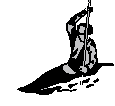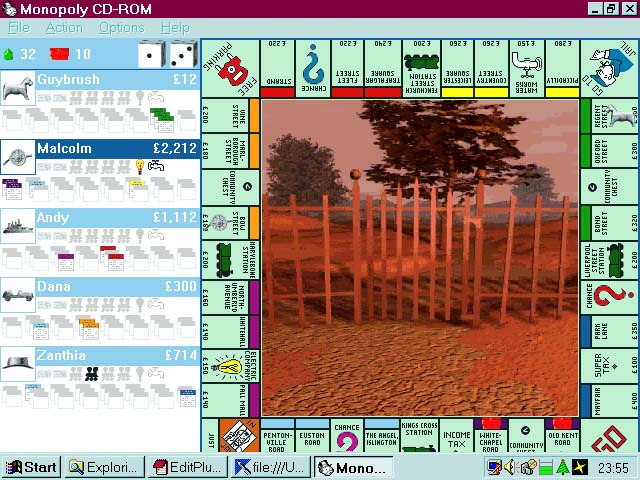
ELECTRONIC
NEWS
BULLETIN
FOR
THE
| News & Events |
| Wildlife Reports |
| Words of the Week |
| Historical Snippet |
| Advertisements |
|
|
| Web Sites (Local) |
| Quote |
| Computer Tips |
| Games & Leisure |
| Web Sites (****) |
| Events |
| Toponymy |
| Local
Organisation Web
Pages |

This
is the first published Electronic Newspaper for
Shoreham-by-Sea
and District, West Sussex, England
Local News
15 February 2000
Although not officially announced, the long term plans for the sewage works at Shoreham Harbour (Southwick Outfall) will be upgraded to secondary treatment (biological filtration). This will reduce the solid loads pumped out to sea, which have to be transported away somehow, most likely by road tanker.Some notes on sewage disposal at sea (incomplete)
Please send any comments to:
Andy Horton Glaucus@hotmail.com
Wildlife Reports
10 February 2000
- The
morning gales and high tide congregated hundreds of omnipresent Black-headed
Gulls on the shingle, a common event. However, I noticed that scores
of these gulls had very dark red legs, as dark as the Mediterranean Gull.
Heads varied from all brown (looks black in the winter light) to patchy
and all white. The Mediterranean Gull has white wing tips.
On the brackish Widewater Lagoon, Mute Swans drunk from a bowl of fresh water provided for them.
9 February
2000
Red-breasted
Mergansers rested on Widewater after a squally spell of rain and high
winds gusting to gale force.
The Minutes of the Adur
"Quality of Life" (AQL) Meeting of 18 January 2000 have now been
compiled by Natalie Brahma-Pearl from Adur District Council (a few amendments
will be necessary). It came as a great surprise to me that subjects covered
were not all old hat and several new issues arose:
Agenda covered:
Development
of Strategic Gaps
New
Homes Allocation
Shoreham
Harbour (not fully covered)
Ropetackle
(not fully covered)
Cycling
Paths (not fully covered)
There
was insufficient time to cover the 3 last aspects because of the detailed
discussion on the first two points.
The
next AQL meeting is on 8 March 2000.
New Homes Allocation, Extra Information sources:
Original
Article
http://www.newsunlimited.co.uk/observer/comment/story/0,3879,136256,00.html
Letters
Responses
http://www.newsunlimited.co.uk/observer/letters/story/0,3879,138717,00.html
Lord
Rogers Report on Housing Needs
http://www.ice.org.uk/project/newsletter0799.html
Urban
Task Force
http://www.ice.org.uk/public/bsrtf/bs-tur.rtf
Rogers'
Urban Rennaissance
http://www.construction.detr.gov.uk/cis/conmon/mar99/con9.htm
Richard
Rogers and John Gummer on the threat to our cities from green-belt development
http://www.london-forum.co.uk/docs/greenbelt.html
Richard George Rogers
http://www.latech.edu/~kws/projects/pamn/pamnbio.html
http://www.greatbuildings.com/architects/Richard_Rogers.html
Coombes: (this is a Link to Jenny Passmore's site)
Find
the Sites of Special Scientific Interest using this link:
Friends
of the Earth SSSI Navigator
Quote:
The
Paradox of the Life Sciences
"The paradox of the life sciences which makes them different in kind from physical science, is in the detail of nature everywhere. We see it about us in the birds, the trees, the grass, the snails, in every living thing. It is this. The manifestation of life, its expressions, its forms, are so diverse that they must contain a large element of the accidental. And yet the nature of life is so uniform that it must be constrained by many necessities."
by J. Bronowski
Computer Tips
Microsoft Word for
Windows:
The Mail Merge facility is just another reason why old fashioned typewriters are redundant in modern business use. The ability of computers to send personalised messages to large numbers of people and organisations can be very useful.
However, the instructions
and tips for inserting addresses into a Mail Merge document are usually
couched in difficult to decipher language which can be off-putting. In
the old computer terms the rule was that separate database information
is imported into the document. However, these databases can now be compiled
in lots of different programs.
e.g. Lists of addresses
and any other information to merge can be imported into Microsoft Word
for Windows from the following programs:
Files from Microsoft Access
and
Microsoft Excel, if these programs are installed on your system.
A personal address book
you created for use with Microsoft Exchange server, Outlook or
Schedule+ 7.0 contact lists, or similar address lists created with
a MAPI-compatible messaging system.
Files from single-tier,
file-based database programs for which you have installed an open database
connectivity (ODBC) driver. A number of these drivers are included with
Microsoft Office.
Files in the following formats, if you included the appropriate converter when you installed Word:
ASCII text files Microsoft
Word for the Macintosh versions 3.0 – 6.x Microsoft Word versions
3.0 – 6.0 for MS-DOS Microsoft
Excel versions 2.0– 8.x WordPerfect versions 6.x for MS-DOS and 6.x for
Windows Lotus 1-2-3 versions 2.x– 4.x
Note If
you installed Microsoft Office, you can also use Microsoft Query
to construct a query and retrieve the data you want from an external data
source.
My Tips:
For
small address lists (up to about 12) the ostensibly easiest way is to use
the Microsoft Word "Table" system. Go
to the menu Tools > Mail Merge. However, this
system is misleading and you have to save the list of addresses with the
main document, or rather if you do not save the main document you can lose
your address list and it is not recoverable.
Warning:
do
not use this system, it is awkward in a lot of other ways as well (lack
of cut and paste for a start): despite being the easiest to get started
on, it is not worth the grief it causes.
The
Microsoft integrated system uses Microsoft Outlook, which is a specialised
organisation and address list for EMail , faxes and the whole gamut of
modern communications. It is a bit awkward and not intuitive and it will
not integrate with the CompuServe Pegasus developed software which
I use, and it is probably not quite as usable as Lotus Organizer (which
is not integratable?).
***
For
the World
Oceans Day address list, I have found Microsoft Excel (the spreadsheet
program) the most practical system to use for Mail Merge. However, for
a Membership List, or any contact list, a more sophisticated system will
be a better long term prospect.
Star:
Latest Virus Information
Historical Snippets
1627-29 Shoreham
sea captains and ships were given "letters of marque" authorising them
to attack foreign ships, notably Dutch vessels, as privateers. One of these,
the successful Captain William Scras attacked at least 7 ships. He was
buried at St. Botolphs churchyard.
-
- 25 February 2000 (Friday)
- Acoustic & Folk
- Ungagged: Richard Durrant & friends
- Music evening at the Airport Bar.
- £4.00 Free for performers.
Events
- 26
February 2000 (Saturday)
- £5.00 Bar. 8:30 - 12.00.
-
Sixties Rock
Relay: Pete Finch, Mick Wackford etc. at
Community Centre, Shoreham
Web Sites
|
|||||||
|
- New Local Sites:
-
 Adur
Canoe Club
Adur
Canoe Club
Words of the Week
toponym
| tpnm | n. L19. [f. TOPO- + -NYM.] 1 Zool. & Anat. A name for
a region of the body. Now rare. L19. 2 A place-name, esp. a descriptive
one, usu. derived from a topographical feature of the place. Also, any
name, as a personal name etc., derived from a place-name. M20.toponymic
a. & n. (a)adj. of or pertaining to toponymy; (b)n. = TOPONYM 2: L19.
---------------------------------------------------------
Excerpted
from The Oxford Interactive Encyclopedia
Developed
by The Learning Company, Inc. Copyright (c) 1997 TLC Properties Inc.
toponymy,
taxonomic study of place-names, based on etymological, historical, and geographical information. A place-name is a word or words used to indicate, denote, or identify a geographic locality such as a town, river, or mountain. Toponymy divides place-names into two broad categories: habitation names and feature names. A habitation name denotes a locality that is peopled or inhabited, such as a homestead, village, or town, and usually dates from the locality's inception. Feature names refer to natural or physical features of the landscape and are subdivided into hydronyms (water features), oronyms (relief features), and places of natural vegetation growth (meadows, glades, groves).
Toponymy is concerned with the linguistic evolution (etymology) of place-names and the motive behind the naming of the place (historical and geographical aspects). Most toponymy, however, has concentrated on the etymological study of habitation names, often neglecting the study of feature names and the motive behind the naming of the place.
Habitation and feature names are either generic or specific, or a combination of the two. A generic name refers to a class of names such as river, mountain, or town. A specific name serves to restrict or modify the meaning of the place-name. Most of the world's languages can be divided into two groups based on the general tendency to have the specific either precede or follow the generic. In English the specific usually comes first, while in French the specific generally follows the generic. The influence of other languages creates exceptions to this generalization. The influence of French and Spanish created many exceptions to the tendency in English in the United States to have the specific first. This is most evident in the naming of many larger bodies of water, such as Lake Superior, Lake Michigan, or Lake Champlain, that were first explored and settled by the French. English settlers migrating into these areas accepted the French naming convention, but since the French did not colonize the areas heavily, many of the smaller bodies of water in these regions were named under the English convention of specific first.
Most toponymic studies have concentrated on the specific aspect of the place-name. The adjectival form of the specific is the dominant place-name type in English. Prepositional place-names used in a descriptive sense are more rare in English. The City of Chicago is an example of the prepositional place-name, but in common use the preposition and the generic are dropped.
Toponymy also involves the study of place-names within and between languages. Studies within a language usually follow three basic assumptions: every place-name has a meaning, including place-names derived from personal names; place-names describe the site and record some evidence of human occupation or ownership; once a place-name is established or recorded, its phonetic development will parallel the language's development.
The study of place-name transfer
from one language to another is undertaken by investigating oral and written
methods of place-name communication. Phonetic transfer is the most common
means of place-name transfer between languages. This involves the spoken
transfer of a place-name from one language to another. Little or no knowledge
of the language from which the place-name originated is required. A person
will listen to the place-name spoken and then phonetically render the place-name
in his or her own language, creating at best a close approximation. Many
of the early North American colonial place-names were transferred from
native Indian languages in this manner. Oral translation requires at least
some degree of bilingualism on the part of both parties communicating the
place-name. Translations of place-names have usually occurred with more
important place-names or with large features. Many of the names of the
seas of the world, for example, have been translated from different languages.
Folk etymology is based on the sound of the place-name and is therefore
similar to
phonetic transfer. Folk
etymology occurs when the sounds of one language will not easily convert
to the sounds of the second language, as in phonetic transfer. The transfer
of many place-names occurred between French and English settlers of North
America through folk etymology.
The dominance of etymology in toponymy has limited the interest in writing as a means of place-name transfer. As printing became more important over the years, place-names were adopted between countries and languages directly from maps by visual transfer. Once the name had been adopted by visual transfer, it was pronounced according to the adopting language's standards.
Toponymy can uncover important historical information about a place, such as the period of time the original language of the inhabitants lasted, settlement history, and population dispersal. Place-name study can also provide insight to religious changes in an area, such as the conversion to Christianity. Information about the folklore, institutional conditions, and social conditions of a place can be understood as well. Linguistic information like words and personal names, not mentioned in literature, can also be found through toponymy.
Encyclopaedia Britannica
Toponymy
be
eastern bremre, ofer bremre 956, aqua de Schorham 1263,
aqua de Pende 1301, aqua de Schorham 1263.
The name "Adur" arose from a mistake in interpretation of 5th century Roman documents for Portus Adurni, which was originally claimed to be in what is now the Adur estuary, but now known to be at Portchester. The name appeared in Michael Drayton's 'Polyolbion' in the 17th century (1612).
The name "Adur" from the Celtic word 'dwyr' or 'dwfr' meaning 'flowing waters' is in doubt. The source reference is in Henry Cheal's 'History of Shoreham' but there is no reference in the book, and there does not appear to be a word 'dwyr' known to the experts (checked). The name 'Adur' may have arisen by mistake by Harrison's application of the Roman 'Portus Adurni' to a location near the current Adur, from the document 'Notitia Dignitatum' .
New research: Old river names like the Thames often have ancient origins, pre-Saxon, i.e. Celtic. I have now discovered the Cornish (Celtic) word "dowr" and the Welsh "dwfr" which means water. The must be a slight possibility that (Adur without the A) was in existence as the common name of the river before Michael Drayton erroneously attributed 'Portus Adurni' to a location near the current Adur.New:
'a-dhowr' (Cornish) means of the water, or from the water. Now,
there still must be considerable doubt over the origin Adur from the Celtic
(there are no comparable names in Wales or Cornwall).
The
river has also been known as the
Sore (Holinshed's Chronicle 1577).
This is likely to be because of back-formation. Back-formation is the reverse
of affixation, being the analogical creation of a new word from an existing
word falsely assumed to be its derivative. (i.e. Sore arose after the name
Shoreham and not the other way round).
In
late Saxon times the river was known as the Bremre (Bramber).
Games & Leisure

Westwood produce a CD-ROM version of the popular board game Monopoly. It is a very playable game (in some respects better than the actual board game, e.g. making deals). There is scope for special rules, but the opportunity for changes has been missed, and on the copy of this game I played on, some of the alternative rules e.g. collecting fines for landing on Free Parking did not work properly). For fans of the game only.
Free Advertisements
SPONSORSHIP
OPPORTUNITY
For any company or organisation wanting nationwide green publicity, there is an opportunity to sponsor the journal "Glaucus" of the British Marine Life Study Society.
There remains sponsorship opportunities on the BMLSS (England) web site and other publications, including Torpedo.
Sponsorship is also available for the Adur Electronic News Bulletin and the Shoreham-by-Sea web pages (which preceded the Adur Resource Centre web site), which would be more suitable for a local firm(s).
Web Site Design Services are available from Hulkesmouth Publishing
Normal advertisement rules
apply.
Submissions accepted by
EMail only.
Adur Torpedo was written, designed and distributed by Andy Horton.
Links to earlier issues
(for subscribers who have downloaded the Bulletins only, and web site visitors).
| Issue 1 | Issue 2 | Issue 3 |
| Issue 4 | Issue 5 | Issue 6 |
| Issue 7 | Issue 8 | Issue 9 |
| Issue 10 | Issue 11 | Issue 12 |
| Issue 13 | Issue 14 | Issue 15 |



